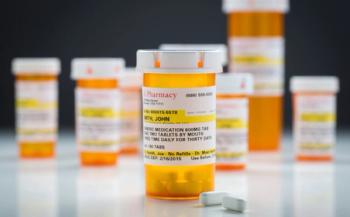
- Pharmaceutical Executive-03-01-2015
- Volume 35
- Issue 3
Is There Gold in the DNA Selfie?
Pharma jumps on board personal genomics train-at least for test drive-but will journey ultimately help transform treatment or stall out as just another fad?
TODAY'S PATIENT MOVEMENT IS ON THE MOVE, with an expanding, play-it-forward agenda grounded in the many new obligations that system reform now places on the individual consumer of healthcare: as an active, co-equal partner to the clinician in successful diagnosis and treatment, and-most importantly-as a direct contributor to financing the cost of that care.
William Looney
But less is known about the growing prominence of patient organizations in the crowded and intensely competitive business of scientific research. Among other things, the movement has embraced a new model-venture philanthropy -that strives to go places where risk-averse private enterprise fears to tread. The biggest and latest example is the Cystic Fibrosis Foundation's sale of its royalty rights to portions of Vertex Pharmaceutical's CF portfolio for the whopping sum of $3.3 billion, which the Foundation will use to finance what it calls "daring opportunities for a life-long, permanent cure to this disease."
That news prompted Pharm Exec to cast around for similarly transformative models that fuse patient awareness and activism with a business objective. That led us to our lead feature this month: an in-depth look at the patient genome partnering advocate 23andMe, which has re-emerged from a period of bad karma with the FDA to ink some potentially ground-breaking and mutually profitable collaborations with big Pharma. That inauspicious start with regulators, which resulted in an FDA ban on 23andMe's first product, a genetic test kit for patients, proved a useful corrective to the company's initial broad lens business model, with a script written by A-list veterans of the open-access Googleplex but no fixed choreography to channel what patients might practically do as consumers of healthcare services, once they obtained information to their own genetic future. There was a risk element around inappropriate medical treatments that no amount of gloss about patient empowerment could conceal, a fact that both the FDA and 23andMe have quietly taken to heart.
Two years on, 23andMe stands out as a fast-maturing enterprise with an adaptive learning culture. Indeed, Senior Editor Casey McDonald's profile highlights how quickly the company's leadership has regrouped around a commitment to data mining as a source of researchable insights to a healthcare business whose survival now depends on treating patients not as "covered lives," but as active, choosy consumers-and as viable research subjects for industry, too.
Specifically, 23andMe's remit now sees real synergies between drugmakers, academic researchers, and the activist patient. Bringing 23andMe's motivated consumers interested in research into contact with the business side of genomics can expand the supply of useful data for industry and help drive progress in biomedical research. It's a simple proposition, with 23andMe facilitating the entry of self-selected, re-conctactable individuals into industry studies for which they have relevant genetic markers, by offering such patients genomic and genealogical services to keep them interested and involved over time. The risk of consumers making poor medical choices from disaggregated genetic information has been addressed, with a scrubbed and refined counter message: information and the services that surround it need to be precisely targeted and supported for analysis and interpretation; only then can these be productively applied to the goal of improving personal health and well-being.
With signed collaboration agreements in hand, Pfizer, Roche, and other industry giants with the money to spend on the hypothetical now seem to be buying in to the adapted 23andMe model, at least for a test drive. Self-interests are converging. The industry's voracious needs for data to help generate targets and validate the growing number of test compounds derived from de-coding of the human genome shows no signs of slack. There is a ready market waiting for anyone who can fill the gap with willing, accessible subjects.
Of course, only time will tell if this 21st century proposition for a struggling 20th century research system finds its roots. To us at Pharm Exec, there are two relevant questions.
The first relates to standards: are all genomic sequencing technologies created equal-and are all genetic interpretations equally valid?
The second is more basic: will the personal genomics platform that 23andMe is building lead to measurable improvements in treatments and outcomes, or end up as just another faddish exercise, involving a few interested people willing to pay to send a sample of their own spit through the mail?
Stay tuned.
William LooneyEditor-in-Chief
Articles in this issue
almost 11 years ago
Will FDA Fixes Spur Innovation?almost 11 years ago
Tomorrow’s Selling Strategies: Invest & Testalmost 11 years ago
Have Your Eggs, and Your Statin (and Your PCSK9 inhibitor, too?)almost 11 years ago
STAMPing on MAPPs: Is Europe Trapped Again By Division?almost 11 years ago
Our Love Affair with BuzzwordsNewsletter
Lead with insight with the Pharmaceutical Executive newsletter, featuring strategic analysis, leadership trends, and market intelligence for biopharma decision-makers.




